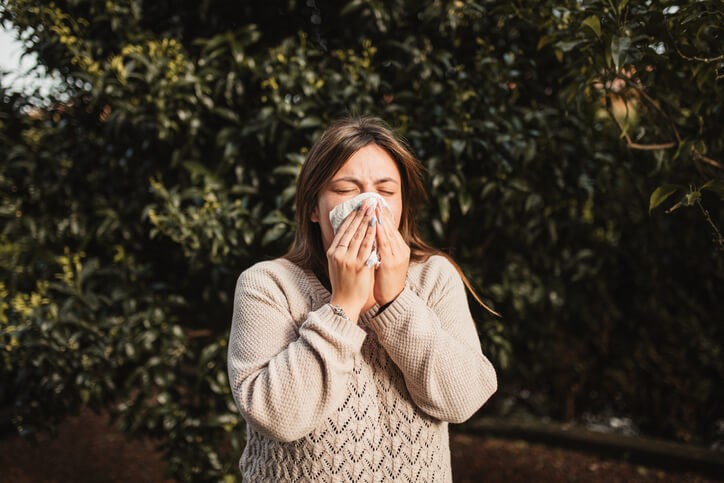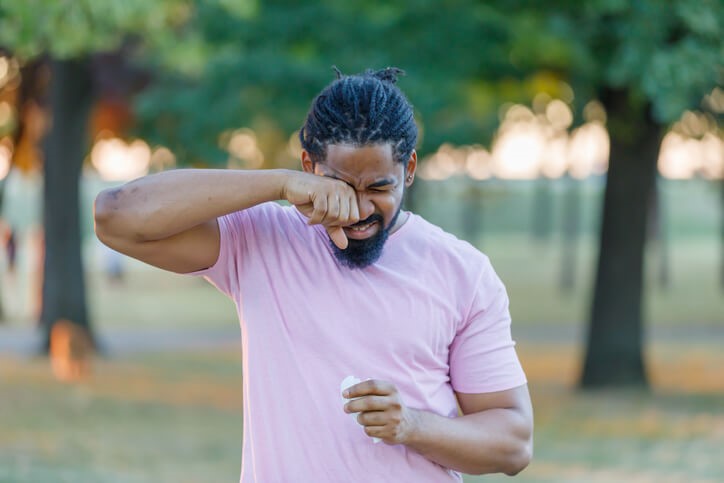Your complete guide to dealing with spring allergies
- Category: Allergy & Immunology, Ear, Nose & Throat Care
- Posted On:
- Written By: Dr. Green
.jpg)
Spring in Louisiana is beautiful; but with the emergence of warm air, colorful blooms, and flowering plants comes a not-so-fun seasonal side effect: allergies.
IYKYK, nasal allergies are no fun—but try not to worry. We’ve put together a guide to everything you need to know about understanding, treating, and preventing the worst effects this season.
Know your nose
We all know someone (or we are that someone) who gets reeeal sniffly and sneezy around this time of year.
That’s because nasal allergies (aka allergic rhinitis, if you’re fancy) are a pretty common health problem.
For most people, nasal allergies are seasonal, which means they only flare up during certain times of the year. However, some people may experience perennial allergies that plague them all year long, and often occur alongside other health conditions like asthma.
It all happens due to irritation inside your nose. Healthy noses produce mucus, which is normally thin, clear, and beneficial; it helps to keep dust, debris, and allergens out of our lungs. Normal mucus drains down the back of our throats, but it’s usually such a small amount that we don’t even feel it.
The problems start when the nose gets overwhelmingly irritated and starts producing too much mucus as a result. This overflow can start dripping from your nose, as well as the back of your throat, which is called postnasal drip.
MORE: Understanding Nasal Allergies
An allergy is your body’s reaction to a substance (aka, an allergen)
An allergic reaction in the nose is a response to an external substance called an allergen. Common allergens include:
- Wind-borne pollen
- Mold
- Dust mites
- Furry and feathered animals
- Cockroaches
Common symptoms include runny noses, sneezing, watery eyes, and more
In addition to increased mucus production, allergies can cause your nasal tissue to swell, which makes the air passages smaller. Your nose may feel stuffed up and uncomfortable, making it difficult to breathe through your nostrils. Sinus tissue can also swell, which can cause headaches and discomfort.
Common symptoms include:
- Runny nose
- Stuffy nose (nasal congestion)
- Drainage down your throat (postnasal drip)
- Sneezing
- Red, watery eyes
- Itchy nose, eyes, ears, and throat
- Plugged-up ears (ear congestion)
- Sore throat
- Coughing
- Sinus pain and swelling
- Headaches

How can I tell if I have nasal allergies or a cold?
It can sometimes be hard to tell the difference between allergies and a common cold due to their similar symptoms. With more than 100 different types of cold viruses flying around during different times of year, it’s a valid question.
While allergies are a response to a substance like pollen, mold, or pet dander, a cold is an infection that’s caused by a virus. While only your doctor can tell for sure, here are some common signs you are dealing with allergies, and not a cold:
- Clear, watery mucus: When you have a cold, mucus is likely to be thick or discolored
- Itchy, red, or watery eyes: Colds don’t typically cause eye irritation
- Long symptoms: A cold usually clears up in a week or so, while allergies can persist all season long
- Symptom reoccurrence: Look for patterns; if you find yourself sniffing and sneezing every year around the same time, or whenever you visit the home of your friend with a pet cat, it’s probably allergies
MORE: Cold vs. Allergy in Children: How to Tell the Difference
It’s important to remember that allergies or a cold aren’t the only answers. Other health problems can cause symptoms that are similar to nasal allergies, including:
- Exposure to irritants or pollutants, such as strong odors or smoke
- Certain medications
- Changes in the weather
- COVID-19
MORE: COVID-19 and annual health screenings
What can I do to prevent nasal allergies?
While allergies are hard to prevent entirely, you can take specific steps and precautions to limit your allergen exposure and reduce your symptoms. Here are some things you can do:
- Avoid directly touching or rubbing your nose or face
- Wash your hands often—and don’t skip the soap
- Wash your bed linens and pillowcases in hot water, and use a detergent designed to reduce allergens
- Use dust-mite-proof covers for all pillows, comforters, duvets, mattresses, and box springs
- Keep your pets out of the bedroom to reduce ped dander allergens in your bedding (sorry Fido!)
- Wear sunglasses and a wide-brimmed hat to cut down on pollen getting in your eyes
- Keep windows closed during high pollen and mold seasons
- Use the air conditioner in your car and home

What can I do to treat my nasal allergy symptoms?
Avoidance of problematic allergens is your best bet. If you don’t already know what’s causing your symptoms, your healthcare provider can help you determine the source. Once you know what’s at the root of your problems, your provider may prescribe nasal steroid sprays or oral antihistamines to help reduce your symptoms.
Be sure to talk to your doc about dealing with your allergy symptoms; together, you can come up with the best plan for your health and lifestyle. If you have any questions, you can schedule an appointment with your Ean Nose & Throat physician.
About Dr. Green

Dr. Stephen Green was born in Atlanta and attended medical school in Savannah, GA at the Mercer University School of Medicine. He graduated near the top of his class and was voted into the Alpha Omega Alpha and Gold Humanism Honor Societies during his time there. He went on to complete his residency at Louisiana State University Health Science Center, graduating in 2021. He joined West Jefferson Medical Center the same year and is currently a board-eligible otolaryngologist. Dr. Green enjoys his practice which includes the full breadth of general otolaryngology, with a special interest in sinus, endocrine, and salivary gland surgery. In his spare time, Dr. Green is a sports enthusiast and outdoorsman. He married his college girlfriend, a Metairie native, and they have two children together.